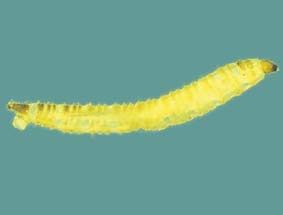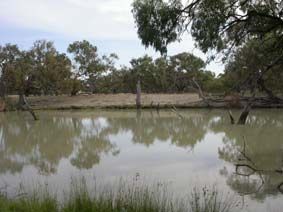Major Group: Insecta
Order: Diptera
Family: Psychodidae |
Descriptive Features: each thoracic and abdominal segment subdivided with many subdivisions dorsally bearing sclerotized areas
last body segments with respiratory tube
3 thoracic segments distinctly separated
thorax not broader than abdominal segments
prolegs not present on any segment
head capsule complete not retractile into thorax
mandibles usually with several teeth
abdomen 9-segmented
Total length: up to 15mm
|

|
Psychodidae |
|
|
|
Taxonomic Checklist: Subfamilies Genera
Bruchomyiinae
Nemapalpus australiensis Alexander
Psychodinae
Brunettia 4 species
Clogmia 2 species
Didicrum 2 species
Epacretron pulchrum Duckhouse
Notiocharis 3 species
Paratelmatoscopus 5 species
Peripsychoda 7 species
Psychoda 21 species
Rotundopteryx 15 species (formerly Pericoma)
Telmatoscopus 10 species
Threticus 3 species
Trichopsychoda montana Satchell
Sycoracinae
Sycorax australis Duckhouse
Trichomyiinae
Trichomyia 19 species
|
|
Distribution: Australia wide
Sensitivity Rating: SIGNAL grade 3
Functional Feeding Group: gathering collectors |

|
Billabong Creek near Conargo, NSW |
|
|
Ecology: Instream habitat: Commonly known as ‘moth-flies’, the larvae of Psychodidae are usually found at the edge of standing or sluggish freshwater habitats, in rotting wood, sand or mud although some larvae are found in hygropetric zones. Psychoda, the most common genus, survives well in ephemeral pools and some Psychodidae species are tolerant of eutrophication and low oxygen levels.
Feeding ecology: Psychodid larvae are gathering collectors feeding on decomposing organic matter. Adults do not feed.
Habit:
Life history: Parthenogenesis is present in some species. Most adults live for only one or two days and are most abundant in early summer, but Psychoda is also common during winter.
|
| |
Information Sources: Colless & McAlpine 1991, Williams 1980, Hawking & Smith 1997, Cranston 1995, Duckhouse 1966, Bugledich 1999, Evenhius 2007
Key to Subfamilies: none
Key to Genera: none
Key to Species: none
|
|
|
|